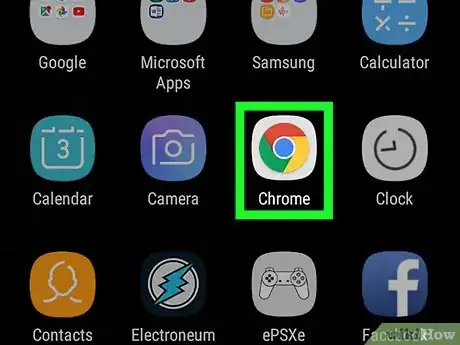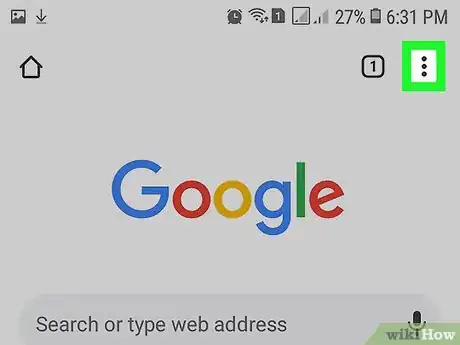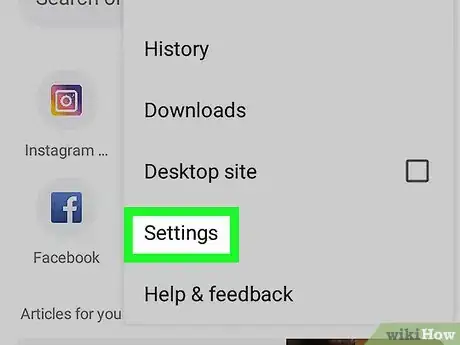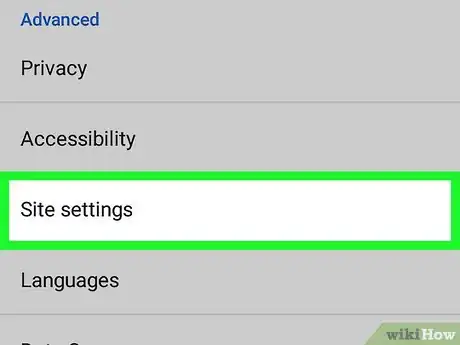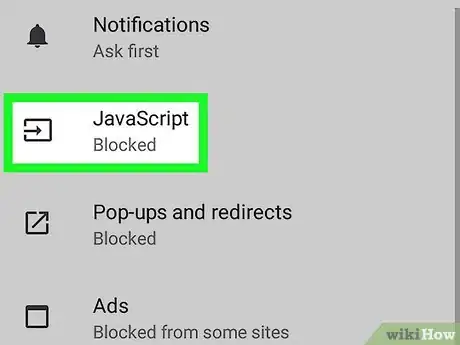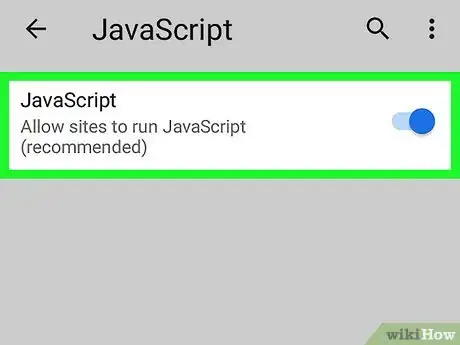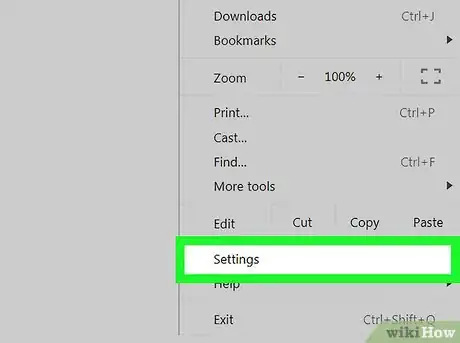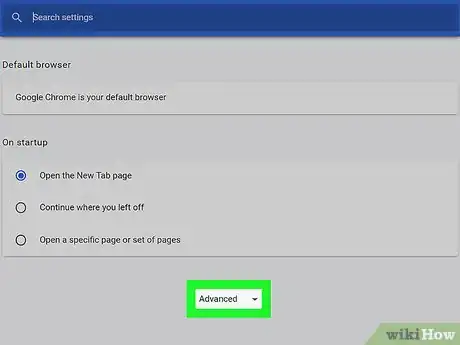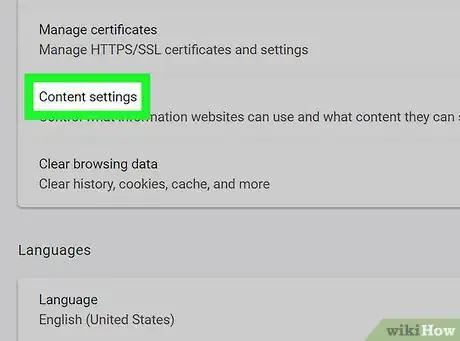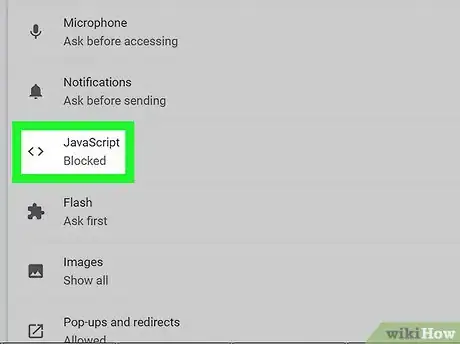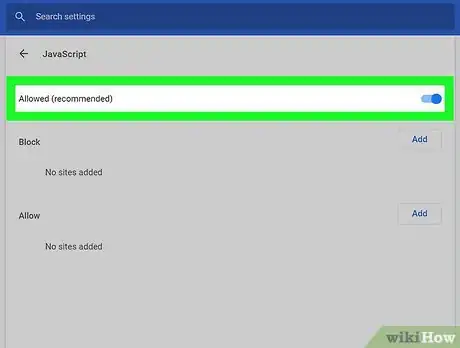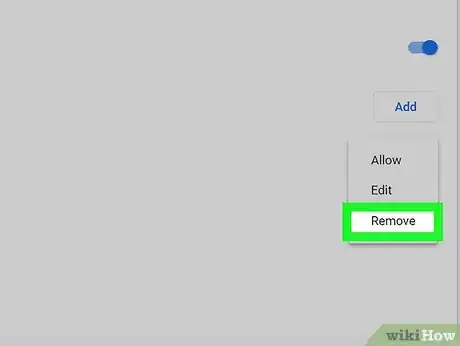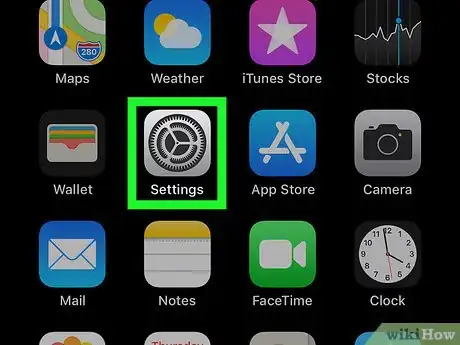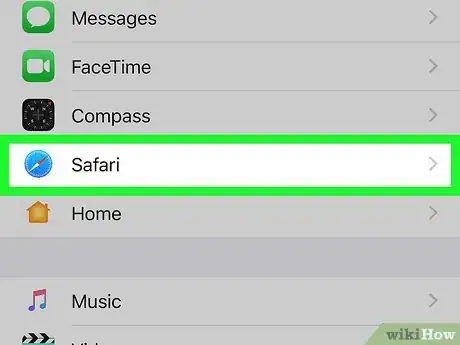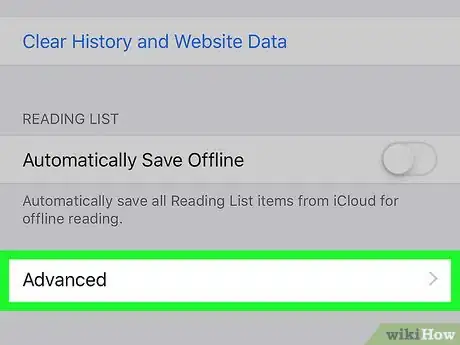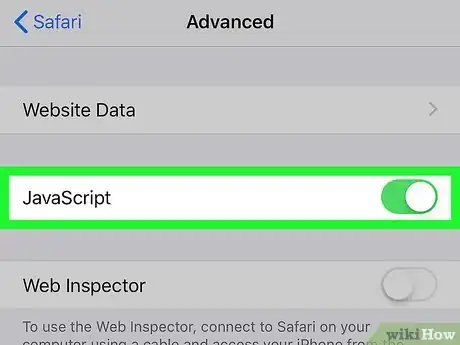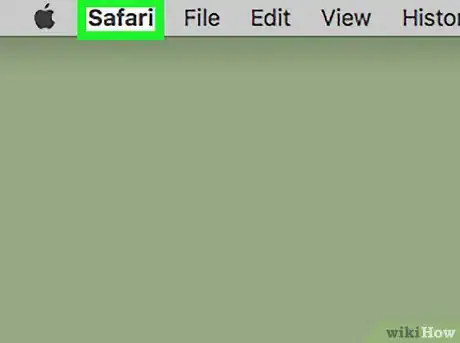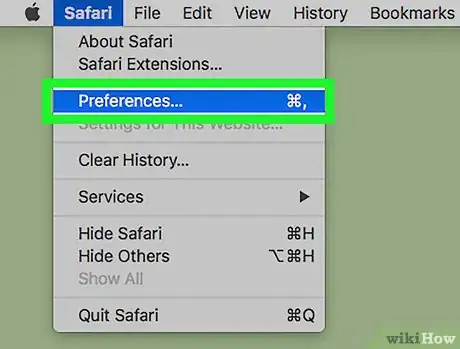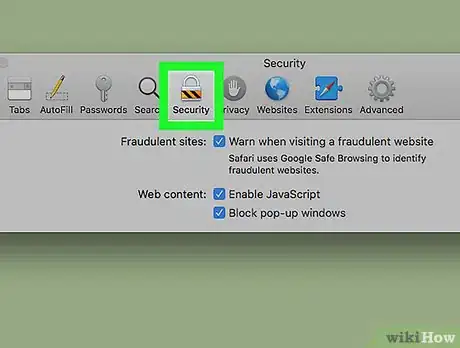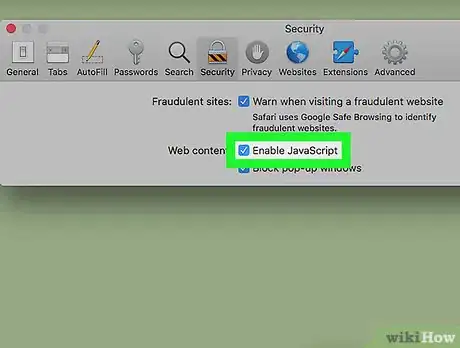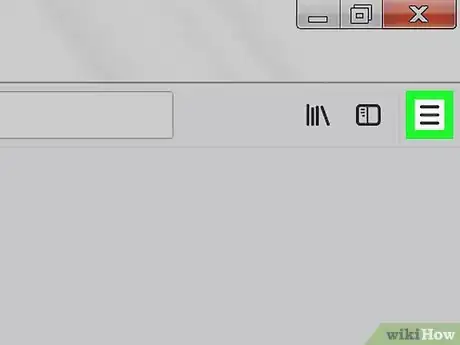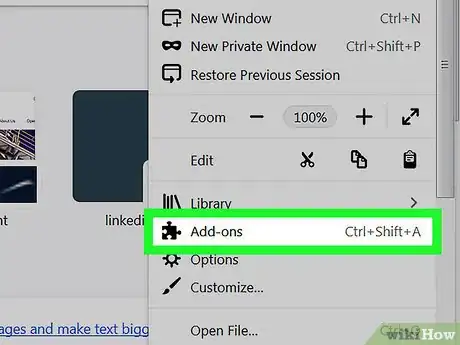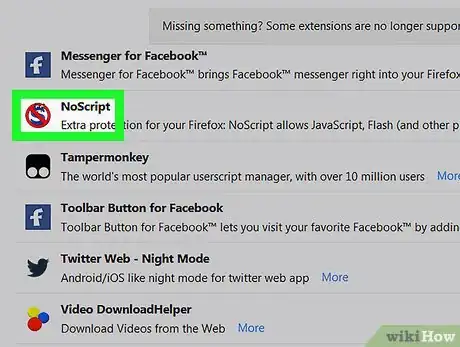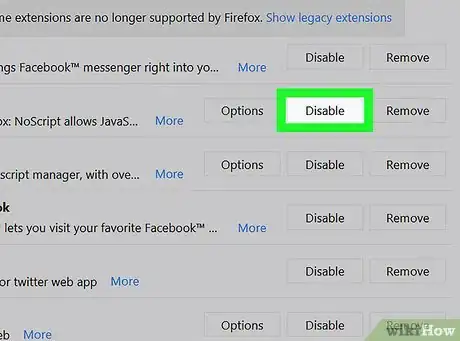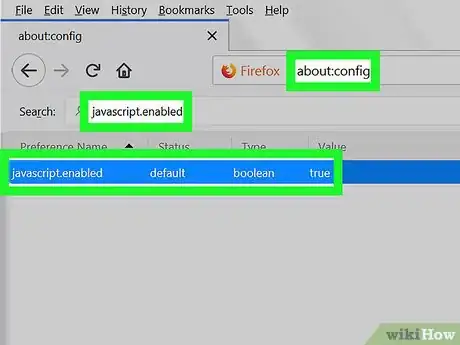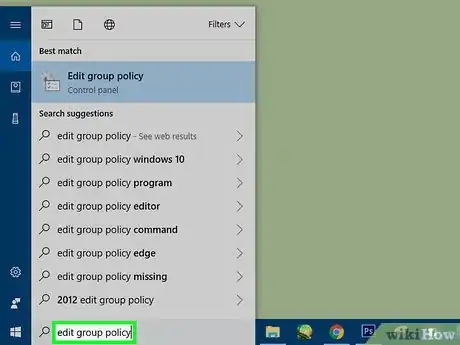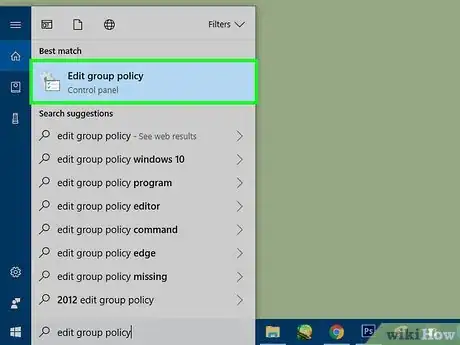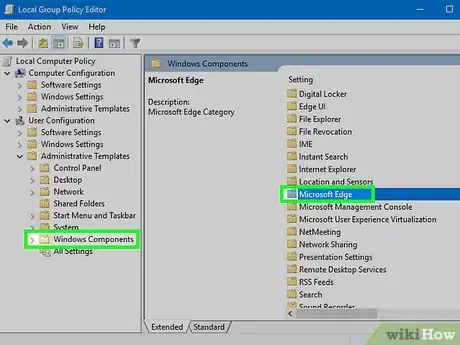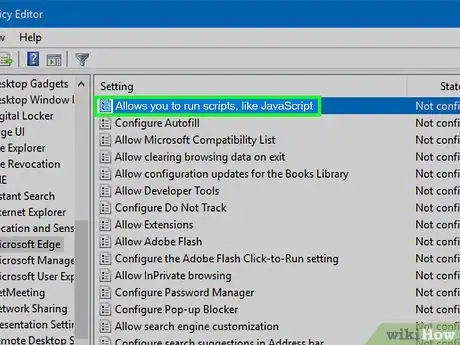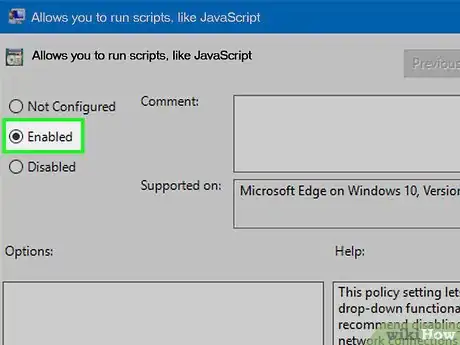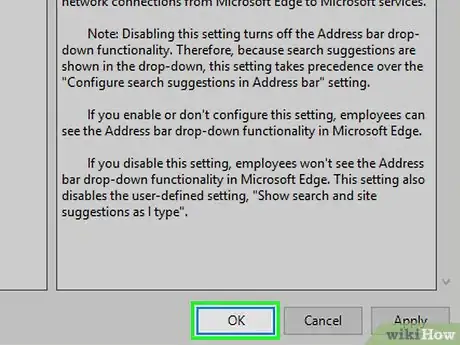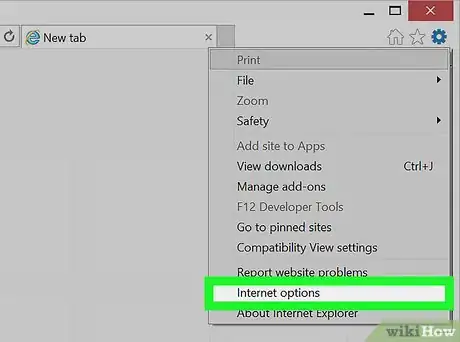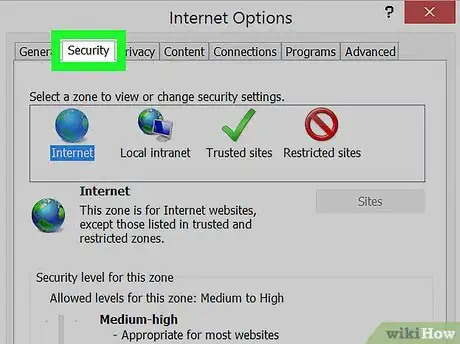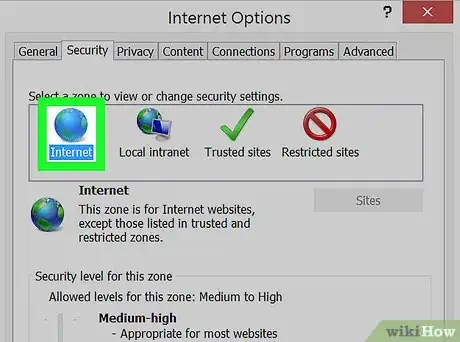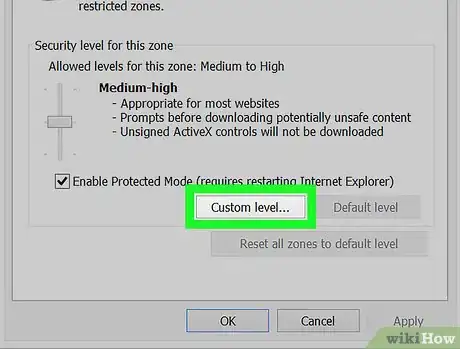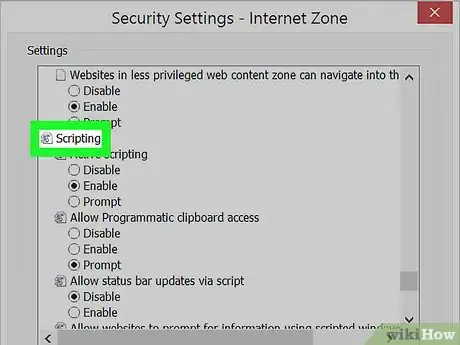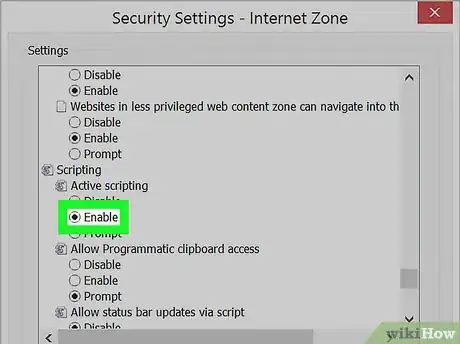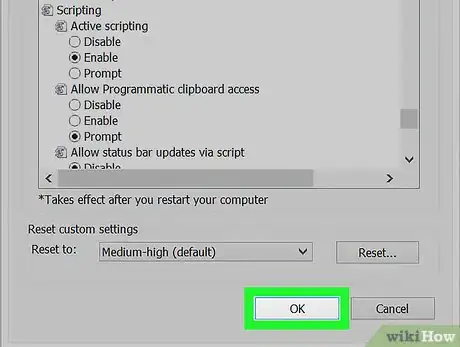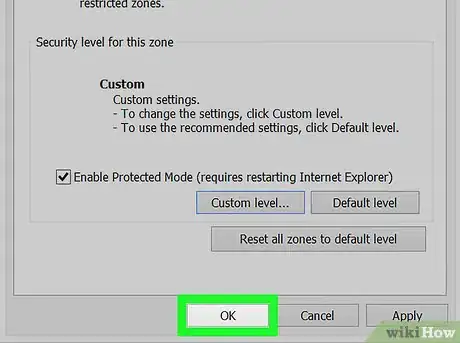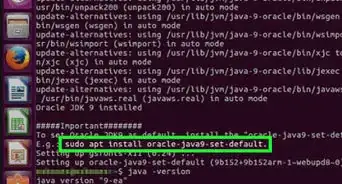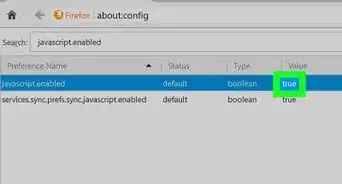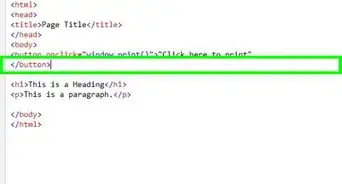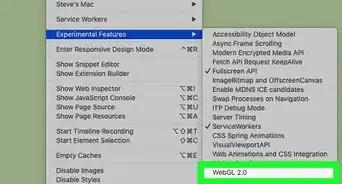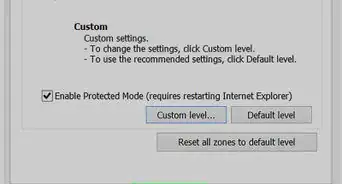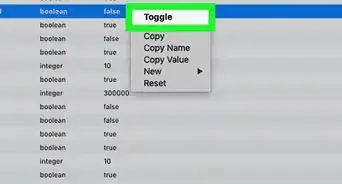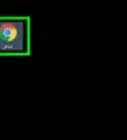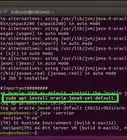This article was co-authored by wikiHow staff writer, Jack Lloyd. Jack Lloyd is a Technology Writer and Editor for wikiHow. He has over two years of experience writing and editing technology-related articles. He is technology enthusiast and an English teacher.
The wikiHow Tech Team also followed the article's instructions and verified that they work.
This article has been viewed 390,253 times.
Learn more...
This wikiHow teaches you how to turn on your computer browser's JavaScript, which allows your browser to load and view certain elements--such as videos or animations--on some web pages. You can enable JavaScript using Chrome on desktop and Android, Safari on Mac and iPhone, Firefox on desktop, as well as Microsoft Edge and Internet Explorer on Windows. Doing so will resolve errors and pop-ups regarding JavaScript.
Steps
Chrome
Android
-
1Open Chrome. It's a red, green, yellow, and blue spherical icon.
-
2Tap ⋮. This icon is in the top-right corner of the screen.Advertisement
-
3Tap Settings. It's near the bottom of the drop-down menu.
-
4Scroll down and tap Site settings. It's about halfway down the page.
-
5Tap JavaScript. This option is near the middle of the Site Settings page.
-
6Tap the grey JavaScript switch. It will slide right and turn blue or green . Doing so enables JavaScript on your Android's Chrome browser.
Note: If the JavaScript switch is blue or green, JavaScript is already enabled.
Desktop
-
1Open Google Chrome. This browser resembles a red, green, yellow, and blue sphere icon.
-
2Click ⋮. It's in the top-right corner of the browser's window.
-
3Click Settings. This option is near the bottom of the drop-down menu.
-
4
-
5Scroll down and click Content settings. This option is toward the bottom of the "Privacy & Security" group of options.
-
6Click <> JavaScript. It's near the middle of the page.
-
7Turn on JavaScript. Click the switch next to Allowed (recommended) to the "ON" position so it turns blue.
Note: If this switch is already blue, JavaScript is already enabled in your Chrome browser.
-
8Make sure you aren't blocking JavaScript. Any sites beneath the "Block" heading on this page won't be allowed to use JavaScript. To remove sites from the block list:
- Click ⋮ to the right of the site's name.
- Click Remove in the drop-down menu.
Safari
iPhone
-
1
-
2Scroll down and tap Safari. This option is roughly halfway down the Settings page. There's a blue Safari icon on the left side of this option.
-
3Scroll all the way down and tap Advanced. It's at the bottom of the screen.
-
4Slide the white JavaScript switch right. It will turn green . Doing so enables JavaScript on your iPhone's Safari browser.
Tip: You may need to close and re-open Safari in order for JavaScript to start working.
Mac
-
1Open Safari. It's a blue, compass-shaped app in the Dock.
-
2Click Safari. This menu item is in the top-left corner of your Mac's screen.
-
3Click Preferences. It's near the top of the Safari drop-down menu.
-
4Click the Security tab. This option is in the middle of the Settings window.
-
5Check the "Enable JavaScript" box. It's next to the "Web content:" heading. Doing so enables JavaScript in Safari, though you'll most likely need to refresh your browser before affected pages will work.
Note: If there's a checkmark in this box, JavaScript is already enabled in Safari.
Firefox
-
1Open Firefox. It's a blue globe with an orange fox on it. By default, Firefox enables JavaScript and prevents you from changing this setting, but some applications interfere with the JavaScript implementation.
-
2Click ☰. This option is in the top-right side of the Firefox window.
-
3Click Add-ons. It's a puzzle piece-shaped icon in the drop-down menu.
-
4Look for a JavaScript-blocking extension. Some of the more popular JavaScript-blocking extensions include "No-Script", "QuickJava", and "SettingSanity".
-
5Disable any JavaScript-blocking extensions. Click the problem extension and then click Disable or Remove when prompted.
Note: You'll have to restart Firefox for your changes to take place.
-
6Enable JavaScript through the advanced user settings. If disabling the JavaScript-blocking extensions didn't fix your problem, you may need to enable JavaScript from within Firefox's hidden settings:
- Enter about:config into the Firefox URL bar.
- Click I accept the risk!.
- Type javascript.enabled into the search bar below the URL bar.
- Make sure the "Value" section of the javascript.enabled item says "False".
- If it says "true", JavaScript is enabled. Delete and reinstall Firefox.
- Double-click javascript.enabled.
- Restart Firefox.
-
7Reinstall Firefox. If all else fails, uninstall and reinstall Firefox to restore all of the default settings. Because JavaScript is a foundation of the Firefox browser, reinstalling should restore its functionality.[1]
Microsoft Edge
-
1
-
2Type edit group policy into Start. This will search your computer for the Edit Group Policy program.
-
3Click Edit Group Policy. It should be at the top of the Start window.
-
4Navigate to the "Microsoft Edge" folder. To do so:
- Double-click User Configuration.
- Double-click Administrative Templates.
- Double-click Windows Components.
- Double-click Microsoft Edge.
-
5Double-click Allows you to run scripts, like JavaScript. Doing so opens a window with JavaScript options.
-
6Click Enabled. This will enable JavaScript in your browser.
Note: If Enabled already has a check next to it, JavaScript is enabled in Edge.
-
7Click OK. It's at the bottom of the window. Doing so will save your settings and apply JavaScript to Edge, though you may need to restart the Edge browser before these changes show up.
Internet Explorer
-
1Open Internet Explorer. It resembles a blue "e" with a yellow band around it.
-
2Click Settings ⚙️. This option is in the top-right corner of the Internet Explorer window.
-
3Click Internet options. It's near the bottom of the drop-down menu.
-
4Click the Security tab. This is near the top of the Internet Options window.
-
5Click the Internet globe. It's in the window near the top of Internet Options.
-
6Click Custom level. This option is in the "Security level for this zone" section near the bottom of the Internet Options window.
-
7Scroll down to the "Scripting" section. It's near the bottom of the Settings window.
-
8Check the "Enable" box below the "Active scripting" heading. This will turn on JavaScript for your browser.
-
9Click OK. It's at the bottom of the window.
-
10Click Apply, then click OK. Doing so saves your settings, though you may need to close and re-open Internet Explorer for JavaScript to load properly.
Community Q&A
-
QuestionHow do I enable Javascript on my Android phone?
 Community AnswerThis is not currently possible.
Community AnswerThis is not currently possible.
Warnings
- If your browser is out-of-date, you may have to update it first before you can enable JavaScript.⧼thumbs_response⧽
